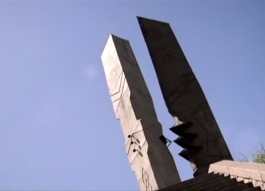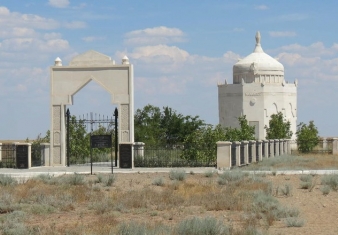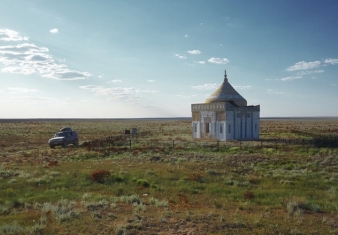 Cultural heritage
Cultural heritage
The area Anrakay in the southeast from Lake Balkhash, near the lake Itishnes where in the years of "great disaster" (aktaban shubyryndy") by actions of the Kazakh militias of three zhuzes had won a victory over the Dzungarian aggressors. Anrakay battle had happened presumably in the spring of 1730.
In honor of Anrakaysky fight on the 35th kilometer of the route Almaty-Bishkek, the monument to fighters against Zhungar invasion is established. Its composition from two grips which are in the center of a circle, symbolize opposition and drama fight of two people.
"The people have to know the history and realize that in unity - force", - the president of the Republic of Kazakhstan Nursultan Nazarbayev at a ceremony of opening of a monument has said. Steles symbolize opposition and drama fight of two people. The Kazakhs who have won this fight are designated by higher grip with the top directed up, the grip is lower, with kind of the top split in half.
Grips differ also on the color scale. The grip from red granite means Kazakhstan and its people, and gray color of the second grip which is Zhungar. Signs and ornaments in architectural constructions designate world model. Ornaments on a Zhungar arm are shifted, split and scattered. In furniture of the Kazakh arm, there is an ornament "koshkar muyiz" - "horns of an arkhar" which reminds the onions directed towards the enemy.
The monument is surrounded by 12 stones with signs of animals of the east calendar. Authors of a construction are the president of the Union of designers of the republic, the honored worker of arts Timur Suleymenov, the vice-president of the Union of designers Almas Ordabayev and the chief of the Almaty regional management of architecture and town planning Sayran Fazylov.
The second known fight with Zunghars on Zhetysu's earth – "Fight at Anrakaye". It has taken place at a foot of the mountain Anrakay located in the northwest from Almaty. All famous batyrs of the earth Kazakh were involved in this fight. At the end of spring of 1729 the Kazakh rebels, having supported the horses in Moinkumov sands and in valleys of the Burkutta, Shabakta, Karakonyz, Yrgayta, Chu Rivers, left to the area of Mountains Hantau.
Within 40 days there has taken place a number of small collisions of the Dzungarian troops with Kazakhs. The first success of Kazakhs has been achieved at Mountains Abulkhair, Telektau, Kangur, the Sunkayty River, at Mountains Hantau. During the main battle Zunghars haven't sustained the attack of the Kazakh cavalry and through small steppe small rivers have been forced out to the Lake Alakol and mountains Anrakay.
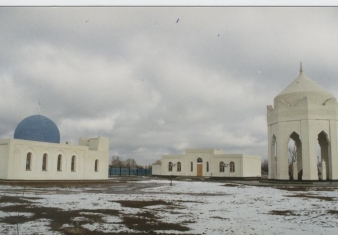
In 50 km from the modern city of Atyrau, there is one of perspective tourist routes, regional memorial estate "Khan Ordaly Sarajshyk" who opens all ancient history of the Kazakh people.
The grave site of the great Kazakh poet of the 19th century, free-thinker and inspirer of the rebellion of Makhambet Utemisov is situated in Inder, Atyrau region, 40 km to the south-east from the village Inderbor.
Atyrau region is rich in its architectural monuments of culture, one of them is considered to be Zhuban Mausoleum.
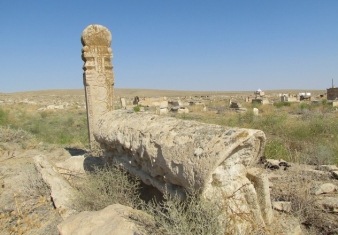
Senek reserve is an architectural monument of the XVII - XX centuries, it represents a necropolis consisting of several sepulchral constructions and an old mosque.

One of the oldest and most beautiful architectural monuments of the city - Uspenski Cathedral is located in the heart of the city of Atyrau, on Issatay Taimanov street, just a few steps from the main square.
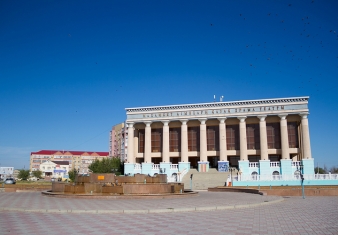
One of the leading places in the cultural life of Atyrau and the whole Atyrau region belongs to the Kazakh Drama Theater named after Makhambet Utemisov.














